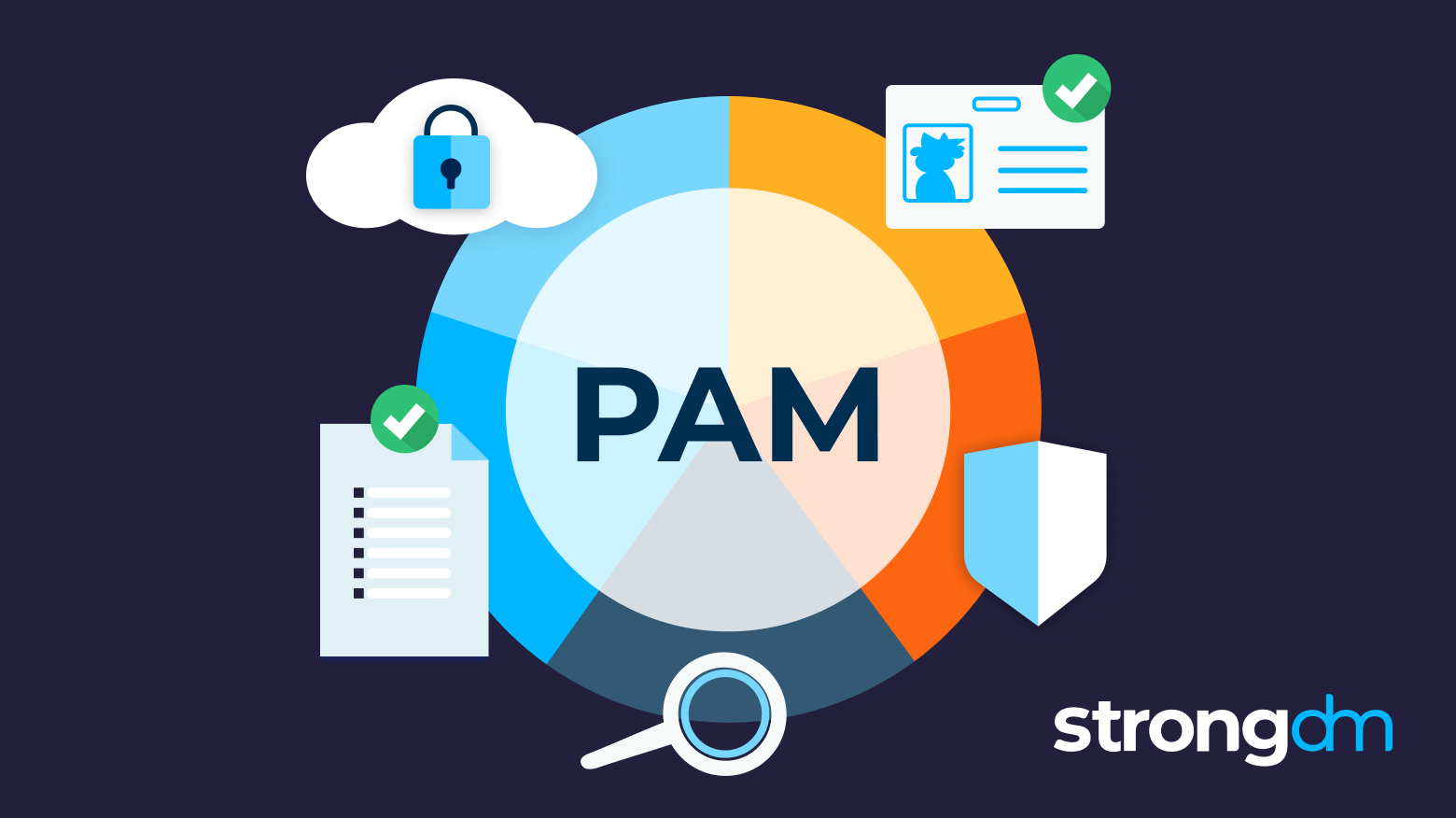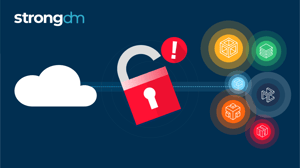9 Privileged Access Management Best Practices


Written by
Fazila MalikLast updated on:
October 17, 2025Reading time:
Contents
Built for Security. Loved by Devs.
- Free Trial — No Credit Card Needed
- Full Access to All Features
- Trusted by the Fortune 100, early startups, and everyone in between
While Privileged Access Management (PAM) is crucial for organizations to secure sensitive data and protect against cyber threats, implementing it is not always a walk in the park. It’s challenging to successfully build programs that balance the tightrope between overly restrictive and overly flexible controls while maintaining consistency across all segments of the business.
Understanding the pillars of access control and following best practices for PAM gives you a roadmap to an implementation that is secure and comprehensive with no security gaps. This article contains nine essential privileged access management best practices recommended by our skilled and experienced identity and access management (IAM) experts.
Challenges of Implementing Privileged Access Management
Identification of Privileged Accounts
- Difficulty in identifying all privileged accounts: Organizations often struggle to comprehensively identify all privileged accounts, leading to blind spots in security measures.
- Lack of clarity on associated access rights: Uncertainty regarding the access rights linked to privileged accounts poses a significant challenge in ensuring the appropriate level of security.
- Risk of sensitive information exposure: Incomplete identification increases the risk of sensitive information exposure, potentially leading to data breaches.
Overprovisioning and Forgotten Accounts
- Accounts created and forgotten over time: The creation of accounts without proper tracking and management results in forgotten accounts that may remain active, posing a security risk.
- Overprovisioning users to minimize friction: To reduce friction in access, organizations may overprovision users, unintentionally expanding the attack surface and compromising security.
- Increased vulnerability to abuse or misuse: Overprovisioned accounts are more susceptible to abuse or misuse, making them attractive targets for malicious actors.
Balancing Security and Productivity
- Striking a balance between security and productivity: Finding the right balance is crucial to prevent data breaches from unauthorized access caused by workarounds. Access to resources needs to be simple and secure, so productivity isn’t impeded.
- Granting appropriate access levels to avoid data breaches: Ensuring that access levels are appropriate helps mitigate the risk of data breaches, striking a delicate balance between security and operational efficiency.
- Risk of disruption and slowdown with inadequate access: Insufficient access can lead to disruptions and slowdowns in operations and incident investigations, potentially affecting the organization's overall efficiency.
Limited Sharing of Privileged Credentials
- Security risk associated with sharing privileged credentials: Sharing privileged credentials among employees introduces a significant security risk, as it may lead to unauthorized access or compromise.
- Need for measures to limit sharing among employees: Implementing measures to restrict the sharing of privileged credentials is essential to mitigate the associated security risks effectively.
- Mitigating the potential for significant security breaches: By limiting the sharing of privileged credentials, organizations can proactively reduce the likelihood of major security breaches.
The 4 Pillars of Privileged Access Management
To effectively implement PAM best practices, you must first focus your efforts on four key pillars:
1. Discover: First, identify all privileged accounts and their associated access rights. This includes not only user accounts but also service accounts, application accounts, and shared accounts. It is essential to maintain an accurate inventory of all privileged accounts to ensure proper management and control.
2. Secure: Keep your documented privileged accounts secure with effective life cycle processes. Identify the access capabilities of each account, type of account, or account criteria and document it.
💡 Pro Tip: Secure your accounts further by using StrongDM’s just-in-time access (JIT), which limits the amount of time a user can access sensitive data. Maintain detailed records of who has access to what so you can easily grant and revoke privileges as needed.
3. Audit: Regularly review and monitor privileged access to detect and respond to any unauthorized activities. Session monitoring and logging tools can help you track user activities and identify any suspicious behavior. These tools can also provide evidence in case of an incident or audit.
💡 Pro Tip: StrongDM’s Reports Library provides insight into exactly who is accessing which resources, tools, and applications at any given time. Advanced analytics also show standing access grants, and resource utilization to understand how to continuously improve the organization’s security posture.
4. Automate: Incorporate automation tools into your organization's framework to streamline, automate, and standardize access protocols. Change control management tools can facilitate just-in-time PAM access and identity governance and administration (IGA) tools help you manage PAM account life cycles.
9 Best Practices for Privileged Access Management
Now that we've laid the foundation of PAM and reviewed the four important pillars, let’s dive into the nine privileged access management best practices recommended by our IAM team.
1. Strong password policies
Enforcing strong password policies is the first step towards securing your privileged accounts. Require your users to choose passwords that use a mix of letters, numbers, and special characters. Passwords should be complex, unique, and regularly updated. Common passwords like "password123" or "admin123" should be avoided, and passwords should not be replicated across other accounts.
2. Multi-factor authentication
Passwords alone are not enough to prevent attackers from getting access to your environment. Enable multi-factor authentication (MFA) for all privileged accounts to add an extra layer of security. This way, even if someone manages to crack a password, they won't be able to access the account without furnishing a second method of identity, whether it's a fingerprint scan, a hardware token, or a one-time password.
3. Role-based access control
At a minimum, implement role-based access control (RBAC) to ensure that users are only granted the privileges they need to perform their jobs. To truly secure access with speed, security, and flexibility, you’ll want both RBAC and attribute-based access control (ABAC) models, which platforms like StrongDM offer. This reduces the risk of accidental or intentional misuse of privileged accounts and limits the potential damage in case of a breach.
4. Regular privileged access reviews
Access management is an ongoing process, not a single implementation. Regularly grant and revoke access as the roles, functions, and employment of users shift, and keep records of each change. Stay on top of new employees as well as those who are leaving their department or the company as a whole to minimize unused and vulnerable accounts. PAM tools that integrate with an identity provider help automate identity lifecycle changes.
5. Session monitoring and logging
A dedicated tool for session monitoring and logging helps you track user activity across your entire infrastructure, all in one place. This enables you to identify and flag suspicious behavior, gather important evidence for audits or incident analysis, and catch potential breaches before they turn into full-blown disasters.
6. System updates and patches
Software vulnerabilities are the gateway to your organization's critical systems. Stay one step ahead of attackers by keeping your operating systems, applications, and firmware up to date with the latest patches and security updates to protect against potential threats.
7. Security audits and assessments
You can't improve what you don't measure. Regular security audits and assessments are necessary to get a clear view of the true state of your PAM strategy and the weaknesses, gaps, or blind spots in your defenses. Use the findings from these audits to improve security controls and mitigate risks.
8. Zero Trust policies
Keep your systems and data airtight with Zero Trust security policies. With Zero Trust, every user and device is treated as a potential attack vector, and access is granted based on continuous verification of identity and device health.
9. Employee training and education
With phishing scams and credential stuffing abundant, employees can be your greatest weakness when it comes to effective access management. Teach them the importance of strong passwords, multi-factor authentication, and show them how their actions can impact the security of the entire organization. Provide regular training sessions to ensure that employees are aware of their responsibilities and understand how to securely handle privileged accounts.
💡 Pro Tip: In addition, prioritize PAM tools that have an excellent user experience. The StrongDM UI provides a simple drop-down menu so users can directly and securely access the tools they need, regardless of where they exist. When users have this kind of easy access, they are much less likely to find less secure workarounds to do their jobs.
Developing a Privileged Access Management Strategy
Developing a comprehensive privileged access management strategy is essential to effectively manage and secure privileged accounts.
Start building your strategy by assessing your current state of best practices for privileged access management. What weaknesses or gaps exist in your current practices? From there, define your goals and objectives. What do you want to achieve with your strategy? Is it to reduce the risk of a breach? Is it to comply with regulatory requirements? Whatever your goals may be, make sure they're aligned with the overall business objectives.
Once you have your goals in place, lay out exactly how you will use privileged access management best practices and tools, to reach Zero Trust Access and protect your systems, limit lateral movement within those systems, and respond abruptly and aggressively to threats.
Moving best practices for Privileged Access Management to the cloud
The cloud has become one of the most sophisticated sources of modern security — it is crucial to extend privileged access management best practices to the cloud. Cloud-based PAM solutions offer scalability, flexibility, and ease of deployment, freeing up infrastructure resources devoted to the hosting and ongoing maintenance of legacy solutions.
In addition, the cloud centralizes and streamlines your privileged access management practices, making it easier to manage and secure your privileged accounts across different platforms and environments.
That said, legacy PAM tools were not built with cloud-native footprints in mind. Traditional PAM tools were built for the privileged few accounts, and integration across your tech stack can get very hairy. With the explosion of technical users and cloud infrastructure, StrongDM’s Zero Trust Privileged Access Management (PAM) platform is the best way to gain comprehensive access controls and auditing capabilities that protect all your users across all your environments.
Taking PAM to the Next Level with a Zero Trust Approach
Zero Trust PAM advances privileged access management by providing real-time visibility and control over access to critical resources. With legacy PAM solutions, privileged user permissions are controlled and managed, but with Zero Trust PAM from StrongDM:
- All technical users are considered privileged.
- Credentials are never shared or even seen by end users.
- Session tracking and review are available for all sessions for all resources (databases, servers, clusters, cloud, and web applications).
- Access is provisioned and deprovisioned through Just-in-Time (JIT) to reach Zero Standing Privileges (ZSP) principles.
- Processes exist to track, monitor, and update roles and resources on a consistent basis.
- New users and systems are easy to manage, including onboarding and offboarding. Deprovisioning access to resources is automated.
- Access is tied to corporate identity through identity provider (IdP) integration.
- MFA is adopted as standard practice.
With StrongDM’s platform, access management is as dynamic as the infrastructure and teams it serves. Get your demo of StrongDM today.
Next Steps
StrongDM unifies access management across databases, servers, clusters, and more—for IT, security, and DevOps teams.
- Learn how StrongDM works
- Book a personalized demo
- Start your free StrongDM trial

Categories:

About the Author
Fazila Malik, Sales Enablement Expert, as an accomplished Product Marketing Manager in the technology industry with over 5 years of experience, Fazila transitioned to a Sales Enablement leader position passionate about empowering go-to-market teams to excel in their roles. Throughout her career, she has worked with a range of technology products, including software applications and cloud-based solutions. Fazila is a member of the Product Marketing Alliance and an AWS Cloud Certified Practitioner. To contact Fazila, visit her on LinkedIn.
You May Also Like





